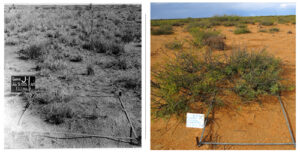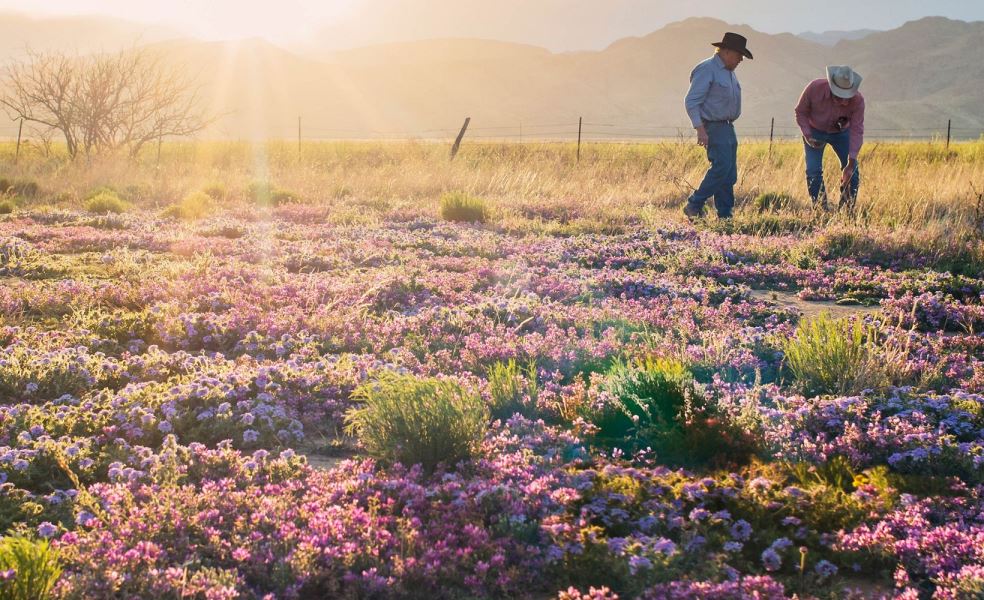Perennial grasses are economically and biologically important in the Southwest U.S. region, but the abundance of these plants can change dramatically over time.
There is concern that declines in grasses are becoming more common.
Other than obvious causes like over-grazing by ranchers, the tilling of soils by farmers and the introduction of invasive species, the reasons that grass cover changes, are poorly understood.
U.S. Department of Agriculture scientists at the Agricultural Research Service‘s (ARS) Jornada Experimental Range and Army Research Laboratory in New Mexico used 100 years of measurements of perennial grass growth from their Long-Term Agroecosystem Research site to identify how climate controls abrupt changes in grass cover.
The study showed that both periods of extreme loss and recovery have occurred.
The long-term datasets, which go back to 1915, were recently used to construct models to understand the correlation between multiple timescales of climate fluctuations and the dynamics of grass cover, land degradation, and land restoration.
“We modeled years of dynamics of the grass community in correlation to climate drivers such as El Niño–Southern Oscillation, North Atlantic Oscillation, and the Pacific Decadal Oscillation Index. We found that perennial grass cover variations during the 20th century were closely tied to the Pacific Decadal Oscillation index,” said research ecologist Erica M. Christensen.
 A 1935 quadrat is covered in black grama grass (left), versus the same quadrat in 2016 in which grass has been entirely lost to bare ground, surrounded by mesquite shrubs (right). (Image courtesy of Brandon Bestelmeyer).
A 1935 quadrat is covered in black grama grass (left), versus the same quadrat in 2016 in which grass has been entirely lost to bare ground, surrounded by mesquite shrubs (right). (Image courtesy of Brandon Bestelmeyer).
The Pacific Decadal Oscillation (PDO) is a phenomenon where there are fluctuations in the ocean and atmosphere that affect the temperature and precipitation patterns in the region. This index goes through two phases — positive and negative — which each last for about 20 to 30 years.
According to the model, grasses do well under a positive PDO phase, and opportunities for increases in grass cover may occur with the return of a positive PDO phase in forthcoming years.
Recent observations, however, indicate that land degradation, including shrub encroachment and associated soil erosion or increased temperatures, may be preventing the expected increases in grass cover with PDO.
The team of scientists hopes land managers can use predictions from these models to time restoration actions to coincide with the positive PDO phase.
“The next positive PDO phase might be the best opportunity to invest in restoration practices, such as shrub removal or erosion control, to allow grasses to capitalize on relatively favorable conditions,” said research leader Brandon Bestelmeyer.
The Agricultural Research Service (ARS) is the U.S. Department of Agriculture’s chief scientific in-house research agency.
Photo of New Mexico grasslands courtesy of Blake Gordon / The Nature Conservancy.

